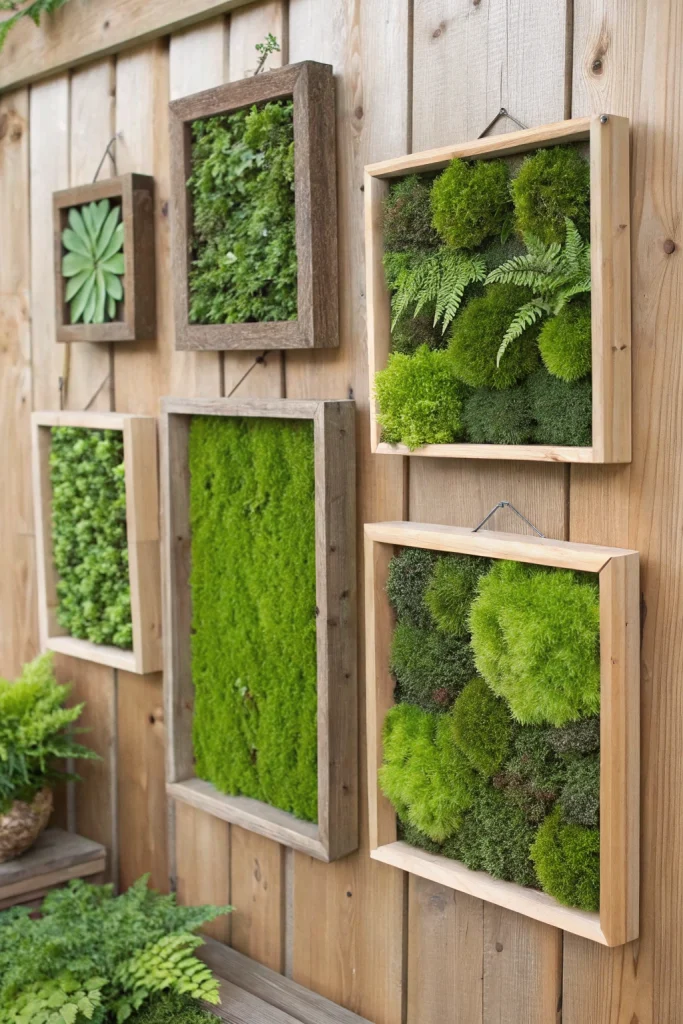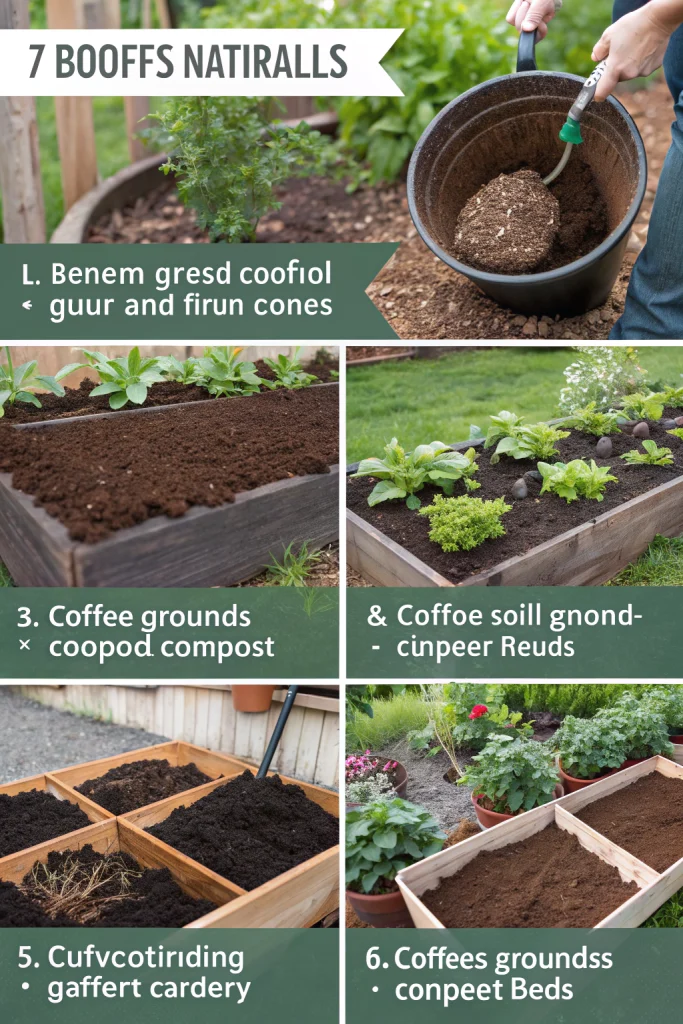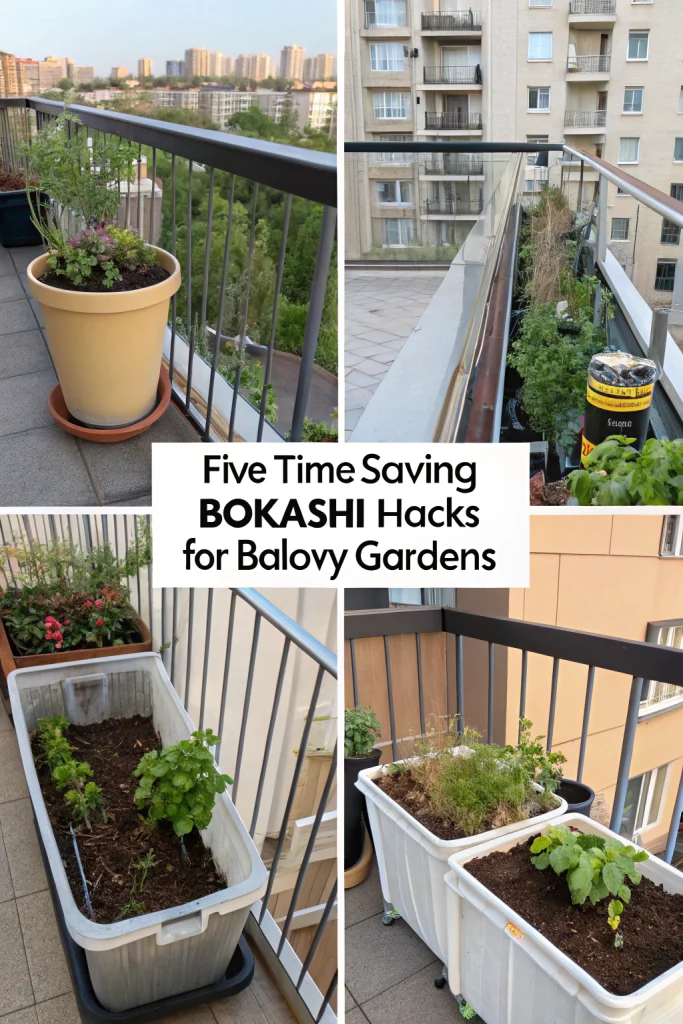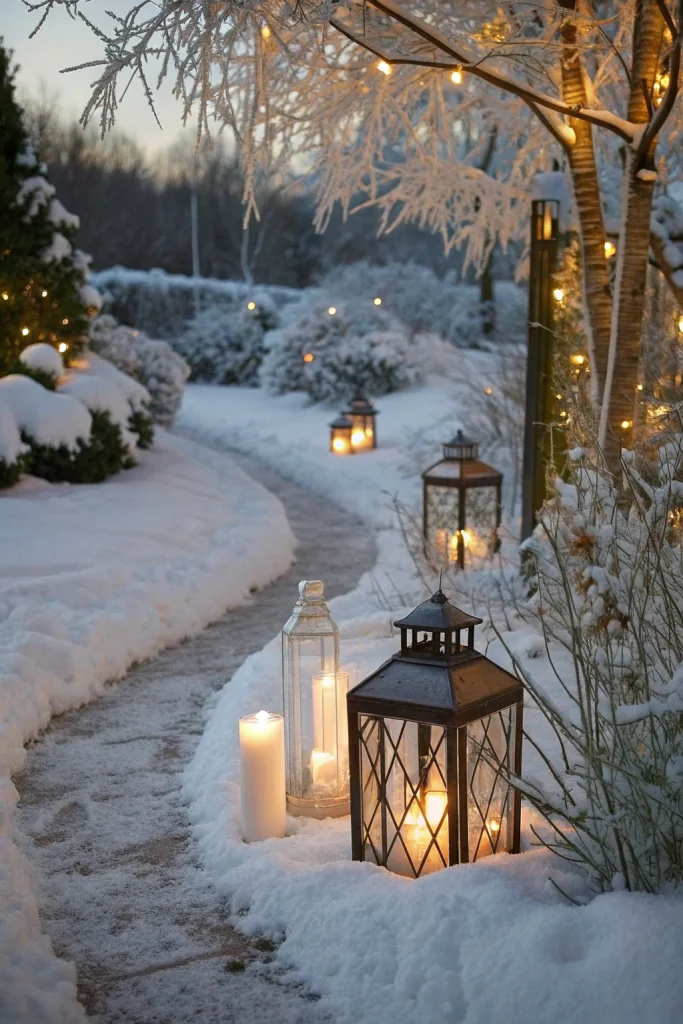Table of Contents
ToggleDIY, Garden, Moss, Frame — The Ultimate Guide to Sustainable Garden Results
DIY, Garden, Moss, Frame blends practical, low-cost techniques with real environmental impact. Use these eco-first methods to reduce waste, save water, build living soil, and support pollinators—all while keeping your garden beautiful and productive through the cold season.
[lwptoc]
Why DIY, Garden, Moss, Frame Matters This Season
Winter prep is when smart gardeners get ahead: leaves become mulch, rain becomes irrigation, and “waste” becomes soil food. With DIY, Garden, Moss, Frame, you set resilient foundations now—so spring growth is faster, healthier, and cheaper.
Core Materials & Tools
- Dry leaves, shredded cardboard, twig cuttings (mulch & sheet-mulch layers)
- Compost setup (bin, bokashi, or worm tower for containers)
- Rain barrel with downspout diverter; watering can or soaker hose
- Reusable pots (terracotta/metal/wood) and sturdy seed trays
- Hand tools (stainless trowel, pruners, rake) and a simple sieve
Step-by-Step Method
Step 1 — Build a No-Dig Base with Leaves
Lay cardboard on bare soil, overlap edges by 10–15 cm, wet lightly, then add 5–10 cm of shredded leaves and a thin layer of compost. This suppresses weeds, buffers moisture, and jumpstarts fungi for spring.
Step 2 — Capture Rain & Water Smarter
Install a rain barrel and water early. Group pots by water needs, mulch containers with leaves, and add saucers with gravel to reduce evaporation.
Step 3 — Feed Soil Life Naturally
Start a cold compost (leaves + coffee grounds) or use bokashi indoors, then trench it into resting beds. Sieve last year’s leaf mould to craft a silky seed mix for early sowings.
Step 4 — Balance Pests with Habitat
Keep select seed heads for winter birds; bundle stems into a habitat corner with sticks/leaves. Use mild soap, neem, or garlic sprays only when necessary—companion plant where possible.
Environmental & Cost Impact
With DIY, Garden, Moss, Frame, you can divert many bags of leaves from landfill, cut irrigation needs via mulch and rain capture, and increase garden biodiversity with simple habitat zones.
Advanced Eco Hacks
- Charge homemade biochar in compost tea before mixing into beds.
- Swap plastic seed trays for soil blocks.
- Try milk-jug winter sowing for hardy perennials and salad greens.
- Insulate patio pots with cardboard jackets and leaf fill to protect roots.
Design & Aesthetics (Keep It Beautiful)
Blend sustainability with style: recycled-wood edges, mossy planters, and warm solar path lighting for a cozy Nordic feel. Choose a restrained palette and repeat textures for cohesion.
Common Mistakes to Avoid
- Using peat moss (unsustainable—choose leaf mould instead)
- Over-tidying (remove hazards, keep habitat zones for allies)
- Watering at midday (evaporation losses; water early/late)
- Heavy fertilizing in cold soils (feed microbes, not just plants)
Storage & Winter Care
Cover rain barrels, aerate compost, label leaf-mould pens by date, and oil cleaned tools. Store dry cardboard flat for quick sheet-mulch builds when beds become free.
Conclusion
DIY, Garden, Moss, Frame proves greener gardening is easier, cheaper, and more resilient. Start with leaves, water capture, soil life, and habitat—your spring garden will repay you with vigor and fewer inputs.
FAQ
- Can I start now? Yes—focus on leaves, rain capture, no-dig prep, and tool care.
- Only a balcony? Use worm towers/bokashi in planters and insulate pots with cardboard + leaves.
- Special tools required? No—rake, pruners, and a basic bin (or bags) are enough.
- Science behind this? See resources below.
- Healthline — Growing food in limited space
- Harvard T.H. Chan — Plate & Planet (sustainability)
- Medical News Today — Health benefits of gardening

Deeper Dive into No-Dig Gardening with Leaves
No-dig gardening is a cornerstone of the DIY, Garden, Moss, Frame philosophy. It’s not just about avoiding back-breaking tilling; it’s about nurturing the soil’s intricate ecosystem. When you lay down cardboard, you’re creating a weed barrier without disturbing the existing soil structure. This preserves the fungal networks and microbial life that are essential for nutrient cycling. Shredded leaves, especially deciduous ones, are rich in carbon and minerals. As they break down, they provide a slow-release natural fertilizer, improving soil crumb structure and increasing its water-holding capacity. Adding a thin layer of compost on top of the leaves introduces beneficial microorganisms and kickstarts the decomposition process. This method conserves moisture, reduces erosion, and creates a thriving environment for plant roots, leading to healthier, more robust plants in spring. Think of it as building a lasagna for your soil – each layer contributing to a rich, fertile foundation.
Choosing the Right Leaves for Your No-Dig Beds
While most fallen leaves are excellent for mulching and composting, some are better than others. Oak and maple leaves are fantastic because they break down slower, providing longer-lasting cover and nutrients. Avoid using leaves from black walnut trees, as they contain juglone, a natural herbicide that can inhibit the growth of many plants. Conifer needles are acidic and best used in smaller quantities or for acid-loving plants like blueberries and rhododendrons. For optimum results, shredding leaves before applying them helps them break down faster and prevents them from compacting into a water-repellent mat. A simple leaf shredder or even a lawnmower with a bag attachment can make this task quick and easy. The finer the shred, the quicker the decomposition and nutrient release into your no-dig beds.
Optimizing Rainwater Harvest for a Sustainable Garden
Water is a precious resource, and efficient water management is vital for any sustainable garden, as emphasized by DIY, Garden, Moss, Frame principles. Beyond installing a rain barrel, consider the placement and size. A larger barrel or multiple barrels can capture significant amounts of water, especially in regions with heavy rainfall. Downspout diverters are crucial as they prevent overflow and ensure direct flow into your barrel. Elevated rain barrels provide better water pressure, making watering easier. For areas without a downspout, consider placing smaller collection bins under eaves or creative solutions to capture runoff from sheds or other structures. Beyond collection, smart application methods are key. Drip irrigation systems, while an initial investment, offer precise watering directly to the plant roots, minimizing evaporation. Soaker hoses woven through beds can achieve a similar effect with less setup. For container plants, grouping them by their water needs allows you to water more efficiently, and adding saucers with gravel not only reduces evaporation by holding excess water but also increases humidity around the plants, which many plants appreciate.
Advanced Rainwater Harvesting Techniques
For gardeners looking to take water conservation to the next level, integrating a “rain garden” into your landscape can be incredibly beneficial. A rain garden is a depressed area in the landscape that is planted with water-loving native plants to capture and filter rainwater runoff from impervious surfaces like roofs and driveways. This not only recharges groundwater but also creates valuable habitat for local wildlife. Another innovative technique is permeable paving for paths and patios. Instead of traditional concrete, which creates runoff, permeable pavers allow water to slowly seep through, reducing surface water pollution and contributing to a healthier water cycle. These techniques align perfectly with the environmental ethos of DIY, Garden, Moss, Frame, moving beyond simple collection to active water management.
Nurturing Soil Life with Natural Composting Methods
Healthy soil is the foundation of a thriving garden, and fostering vibrant soil life is central to DIY, Garden, Moss, Frame. Cold composting is an excellent, low-effort way to break down organic matter in colder seasons. A simple pile or bin filled with leaves, shredded paper, and coffee grounds will slowly decompose, creating nutrient-rich compost over time. For a faster, more effective indoor solution, bokashi composting uses beneficial microbes to ferment kitchen scraps, producing a pre-compost material that can then be trenched directly into garden beds. This process is anaerobic and doesn’t produce foul odors, making it ideal for urban or balcony gardeners. Worm towers, especially for container gardens, turn food waste into nutrient-dense worm castings and “worm tea” (a liquid fertilizer), boosting soil fertility significantly. The key is to see these organic materials not as waste, but as vital food for the microscopic organisms and fungi that turn inert soil into a living ecosystem. These methods reduce landfill waste and eliminate the need for synthetic fertilizers.
Crafting Custom Seed Starting Mixes with Leaf Mould
One of the most rewarding aspects of natural soil building is creating your own seed starting mixes. Sifting aged leaf mould from a dedicated leaf mould cage or bin provides a fine, light, and wonderfully fertile base. Unlike peat moss, leaf mould is sterile once aged and doesn’t compact, allowing delicate seedlings room to grow. You can blend this sieved leaf mould with a small amount of fine compost and some perlite (for aeration) to create a custom seed mix perfectly suited to your needs. This homemade mix retains moisture well, provides a gentle nutrient boost, and introduces beneficial soil microbes right from the start, giving your seedlings a strong, healthy beginning. This practice underscores the self-sufficiency inherent in DIY, Garden, Moss, Frame methods, replacing store-bought products with superior, homemade alternatives.
Creating Biodiverse Habitats for Natural Pest Control
A truly sustainable garden, as promoted by DIY, Garden, Moss, Frame, embraces biodiversity. Instead of fighting nature, you work with it. Leaving select seed heads of spent flowers and herbs standing through winter provides crucial food for birds, which in turn help control insect populations. Creating a “habitat corner” with bundles of hollow stems (like those from sunflowers or common weeds), small logs, and a pile of dry leaves offers shelter and nesting sites for beneficial insects like solitary bees and lacewings. These allies are nature’s pest control, preying on aphids, slugs, and other garden adversaries. When pest issues do arise, always start with the gentlest solutions. Mild soap sprays can deter soft-bodied insects, while neem oil acts as an anti-feedant and growth disruptor. Garlic sprays can repel some pests. However, the ultimate strategy is companion planting: strategically placing plants that naturally deter pests or attract beneficial insects. For example, marigolds are known to repel nematodes, while dill and parsley attract predatory wasps.
Embracing Biodiversity Beyond Pest Control
The benefits of promoting biodiversity extend beyond pest management. A diverse garden ecosystem is more resilient to disease, less prone to monoculture failures, and generally more productive. Consider incorporating a variety of native plants, which are adapted to your local climate and provide essential food and shelter for local wildlife. Pollinator-friendly plants that bloom at different times of the year ensure a continuous food source for bees, butterflies, and other vital pollinators. A small water feature, even a shallow bird bath, can attract a wider array of creatures. Integrating these elements into your garden design transforms it from a mere growing space into a vibrant, mini-ecosystem, enriching both your garden and the local environment, perfectly embodying the spirit of DIY, Garden, Moss, Frame.
The Tangible Environmental & Cost Savings of DIY, Garden, Moss, Frame
The environmental and economic advantages of adopting the DIY, Garden, Moss, Frame approach are profound and easily quantifiable. By diverting leaves and other organic matter from landfill, you contribute directly to reducing methane emissions (a potent greenhouse gas produced by decomposing organic material in anaerobic landfill conditions). The sheer volume of leaves generated by even a small yard can fill numerous plastic bags – all of which are saved from disposal. Reducing irrigation needs through effective mulching and rainwater capture translates directly into lower water bills and decreased strain on municipal water resources, particularly during droughts. Mulch also lessens soil erosion, keeping valuable topsoil in place. Increased garden biodiversity fosters a healthier ecosystem that is less reliant on chemical pesticides and fertilizers, which saves money and protects local water bodies from runoff pollution. By growing some of your own food, even in a small capacity, you reduce your reliance on commercially produced, often long-haul transported produce, thereby lowering your carbon foodprint and saving money at the grocery store. This holistic approach makes good ecological and economic sense.
Calculating Your Savings: A Practical Example
Let’s consider a practical example. A typical suburban yard can generate 10-15 bags of leaves annually. Disposing of these often incurs a cost, either through municipal pickup fees or the purchase of bags. By composting or mulching these leaves, you eliminate disposal costs and gain free, nutrient-rich soil amendments that you would otherwise buy. A rain barrel can collect hundreds of gallons of water during a single rain event. If your municipal water costs are, for instance, $0.002 per gallon, then collecting 500 gallons saves you $1. This might seem small, but over a season and across multiple barrels, the savings add up. Furthermore, reducing the need for synthetic fertilizers, peat moss, and pesticides, which can easily cost hundreds of dollars annually for a modest garden, provides significant financial relief. The return on investment for the simple tools and materials needed for DIY, Garden, Moss, Frame practices is rapid and sustained.
Advanced Eco Hacks: Elevating Your Sustainable Gardening Game
For those who have mastered the basics of DIY, Garden, Moss, Frame and wish to push their sustainability efforts further, these advanced eco hacks offer exciting possibilities. Charging homemade biochar in compost tea before mixing it into beds is a game-changer for soil health. Biochar, a stable form of carbon created from biomass, improves water retention, nutrient availability, and microbial activity. Infusing it with compost tea, rich in beneficial microorganisms, creates a powerful soil amendment. Swapping plastic seed trays for soil blocks made from compressed potting mix eliminates plastic waste, reduces transplant shock, and promotes stronger root systems. Milk-jug winter sowing leverages natural temperature fluctuations to stratify seeds of hardy perennials and cool-season annuals, allowing them to germinate at optimal times with minimal intervention. This method also protects seedlings from harsh winter conditions. And for patio gardeners, insulating pots with cardboard jackets and then filling the space between the jacket and the pot with dry leaves provides excellent root protection for tender plants during freezing weather, preventing them from succumbing to root damage.
Exploring Permaculture Principles in Your DIY Garden
Many of these advanced hacks draw inspiration from permaculture – a design philosophy that mimics natural ecosystems to create self-sustaining and resilient systems. Incorporating even small permaculture principles can greatly enhance your DIY, Garden, Moss, Frame efforts. Consider creating “food forests” even on a small scale, layering beneficial plants in a symbiotic relationship (e.g., groundcover, shrubs, dwarf fruit trees). Implement “swales” or small trenches on contours to slow and spread water across your landscape. Practice “chop and drop” mulching with perennial plants that grow quickly, providing continuous organic matter directly to the soil where it counts. These techniques integrate garden management with ecological principles, creating a space that works with nature, not against it, requiring fewer inputs and offering greater yields in the long run.
Design & Aesthetics: Blending Sustainability with Style
The beauty of DIY, Garden, Moss, Frame is that it doesn’t sacrifice aesthetics for sustainability; it integrates them. Recycled-wood edges for garden beds not only look rustic and charming but also repurpose materials that might otherwise go to waste. Think reclaimed fence posts, old pallets (ensure they are heat-treated, not chemically treated), or fallen branches. Mossy planters, especially terracotta pots intentionally left to weather and develop a natural patina, add an ancient, serene feel to any garden space. Encouraging moss growth on certain surfaces creates a soft, living texture. Warm solar path lighting not only enhances evening ambience and safety but also operates entirely off the grid, showcasing renewable energy. For a cohesive and calming look, choose a restrained color palette for your plants and hardscaping. Repeating textures, such as rough wood, smooth stones, and varied foliage, creates visual interest without clutter. The goal is to design a garden that feels both intentional and naturally evolved, reflecting the care and sustainable practices you’ve invested.
Creating Themed Areas with Sustainable Materials
To further enhance the aesthetic appeal of your DIY, Garden, Moss, Frame, consider creating small, themed areas using sustainable materials. A “secret garden” nook surrounded by repurposed trellises supporting climbing vines, with a bench made from a fallen log, can provide a tranquil escape. A “pollinator paradise” area with a vibrant array of native flowers, perhaps framed by upcycled brick borders, can be a feast for the eyes and a haven for beneficial insects. The key is to see limitations as opportunities for creative, sustainable solutions. An old bicycle wheel can become a unique garden gate accent, or broken pottery shards can be used to create beautiful mosaic stepping stones. Every element, chosen with sustainability in mind, contributes to a garden that is not only environmentally responsible but also visually captivating and deeply personal.
Common Mistakes to Avoid: Smart Gardening Pitfalls
While the principles of DIY, Garden, Moss, Frame are intuitive, certain common practices can inadvertently undermine your efforts. Awareness is key to avoiding these pitfalls. Firstly, using peat moss might seem harmless, but it’s harvested from ancient bogs, a non-renewable resource that plays a critical role in carbon sequestration. Opt for leaf mould or compost instead. Secondly, “over-tidying” your garden, while aesthetically pleasing to some, removes vital habitat and food sources for beneficial insects and wildlife. While it’s important to remove diseased plant material and potential hazards, leaving some spent stalks, seed heads, and a small brush pile actually supports a healthier ecosystem. Thirdly, watering at midday, especially in hot weather, leads to significant evaporation losses. Water early in the morning or late in the evening when temperatures are cooler and winds are calmer, allowing more moisture to reach the roots. Lastly, heavy fertilizing in cold soils is largely ineffective. Cold soil microbes are less active, meaning nutrients aren’t processed efficiently, and much of the fertilizer can leach away. Focus on feeding your soil microbes with organic matter, and they, in turn, will make nutrients available to your plants when they need them.
Understanding the “Why” Behind Sustainable Avoidances
Understanding *why* these practices are discouraged reinforces the core tenets of DIY, Garden, Moss, Frame. For instance, the destruction of peat bogs for peat moss not only releases stored carbon into the atmosphere but also obliterates unique ecosystems. Over-tidying, known as “curated decay,” disrupts the natural life cycle of many insects and small animals that rely on plant debris for shelter and overwintering, upsetting the delicate balance of the garden’s food web. Watering at the wrong time wastes water, our most precious resource, while heavy chemical fertilization can build up salts in the soil, harm beneficial microorganisms, and contribute to groundwater pollution. By being mindful of these common mistakes, you ensure that your gardening efforts are genuinely beneficial for both your garden and the broader environment, making your sustainable practices truly impactful.
Storage & Winter Care for Longevity and Efficiency
Proper storage and winter care are often overlooked but are crucial for maintaining the efficiency and longevity of your DIY, Garden, Moss, Frame tools and resources. Covering rain barrels prevents debris from accumulating and helps protect them from freezing temperatures, which can crack plastic. Aerating your compost pile periodically, even in winter, helps the decomposition process continue, albeit slowly. Use a compost aerator or a pitchfork to turn the pile. Labeling leaf-mould pens by date ensures you know which batch is fully decomposed and ready for use in spring. This also helps you rotate your stock effectively. Thoroughly cleaning and oiling your garden tools before storing them prevents rust and keeps them in top condition for the next season. Stainless steel tools, while more durable, still benefit from this care. Lastly, storing dry cardboard flat in a protected area ensures you have a ready supply for quick sheet-mulch builds or for protecting new beds when they become available. These small, consistent efforts pay dividends in terms of preparedness, tool life, and overall garden health.
Preparing Your Garden for the Deep Sleep
Beyond tool and material storage, consider the “winter sleep” of your garden beds. While leaves are excellent for no-dig beds, for some areas, a cover crop sown in late fall can protect the soil from erosion, suppress weeds, and add organic matter. Choices like winter rye, hairy vetch, or crimson clover will grow and then die back or can be chopped and dropped in spring. This practice further enriches the soil, aligning perfectly with the soil-building goals of DIY, Garden, Moss, Frame. Ensuring any tender perennials are adequately mulched or brought indoors (if potted) is also part of conscientious winter care. A little planning and effort in the colder months guarantee a head start and a healthier, more vibrant garden come spring, demonstrating the comprehensive nature of sustainable gardening practices.
Conclusion
DIY, Garden, Moss, Frame proves greener gardening is easier, cheaper, and more resilient. Start with leaves, water capture, soil life, and habitat—your spring garden will repay you with vigor and fewer inputs.
FAQ
- Can I start now? Yes—focus on leaves, rain capture, no-dig prep, and tool care.
- Only a balcony? Use worm towers/bokashi in planters and insulate pots with cardboard + leaves.
- Special tools required? No—rake, pruners, and a basic bin (or bags) are enough.
- Science behind this? See resources below.
- Healthline — Growing food in limited space
- Harvard T.H. Chan — Plate & Planet (sustainability)
- Medical News Today — Health benefits of gardening




